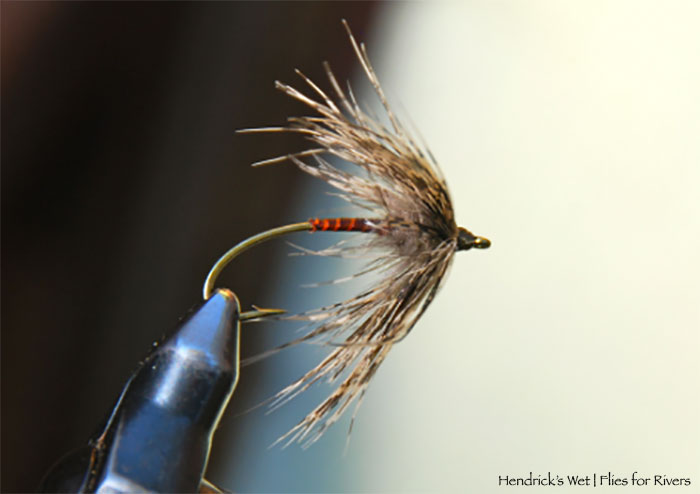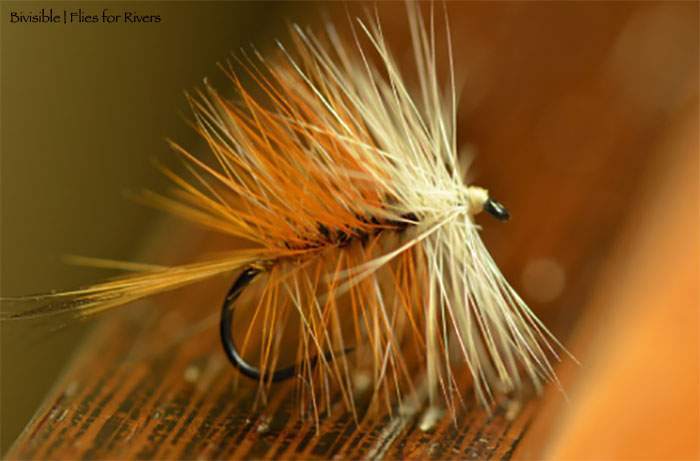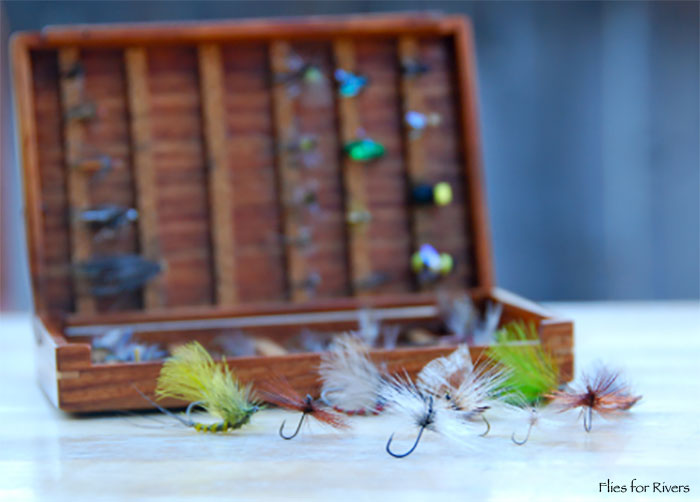
Over a year absent from these pages, we’re pleased as punch to get our People of Fly Fishing series back in the game today. (We have a whole stack of folks we’ve chatted with about doing interviews with us and have begun to knock on doors again with questions in hand; so more to come.)
As we’re all spending lots of time at the vise these days, the weather for much of the country persistently more January-ish that early March-ish, what a better way to jump back into the interview game than to chat with a very, very good professional tyer out of Boise – FS ‘Buck’ Ryan of Flies for Rivers.
Buck has a pretty interesting day job (covered in the interview) and ties some damned impressive flies. Here’s Part 1 of his interview today.
Buck, for a guy with a pretty busy day job, what prompted you to get started in the professional fly tying arena?
Tying and fishing are stress relievers that fuel my law career and personal wellbeing. I perform better when my mind is fresh. Jim Harrison says trout fishing “cools the tubes” after a long day of writing; the rote mechanics of fly assembly allow my mind to rest. Fully realizing a finished product also provides a sense of accomplishment that isn’t attainable every day in the office. That my flies are functional – and travel to places I’ll never go – is serendipitous, humbling, and endlessly fascinating to me.
For me, tying traditional patterns was a logical progression. I was watching old Lee Wulff videos where he bombs No. 6 dry flies across lake outlets for salmon and brook trout. The strikes were momentous – the kind that leaves those few select memories you look back on at the end of a season. After years of technical trouting on Henry’s Fork, Silver Creek, and other Idaho spring creeks, this whimsical approach held a sort of anarchistic attraction that resonated with me. I also thought they would be a riot to fish on backcountry freestones. Here I am talking about the most time-tested, charming, and beautiful trout flies ever designed – skating spiders, giant Wulffs, soft hackles, and traditional Catskills dries. Then I realized you can’t buy them anywhere. I felt like I was missing out on part of the experience, and that something was in danger of being lost. I’m a sucker for tradition but a stickler for performance, so I decided to experiment with both and take them fishing. As I tied them, I couldn’t help but use sharp modern hooks and less bulky, higher floating natural materials. Heavy calf wings became CDC, hackle stem bodies became dyed polish quills, Mustad hooks became Tiemco. After a while I realized they had become something altogether different that I was very excited to fish. As it turns out, fishing a #8 Grey Wulff tied on a “sticky sharp” Japanese hook that flutters to the surface on CDC wings is strangely nostalgic yet futuristic, anachronistic yet satisfying. They also move some very large trout, which you have a strong chance of landing and releasing alive on 2x. Most of my patrons are guys who miss these old patterns, want uncompromised performance, and can afford flies built from super-premium materials and hardware. They get top quality and the comfort of knowing they are helping fund badly-needed river work, and I get some great stories and photographs.
The foam terrestrials are an ongoing project that began 20 years ago when my tying mentor shared some experiments he was doing with closed-cell foam and bendable wire legs. He is far too modest to claim any credit, but these flies are really his, so I can say that they are fantastically effective. What began as a way to tie realistic ants and beetles that would float and hold up spilled over into a variety of forms which I am still refining. The Housefly is a great change-of-pace pattern after a refusal. This summer, I hope to release a cricket – an old standby that has lived too long in the grasshopper’s shadow.
Lastly, I offer modern mayfly patterns that were designed strictly for function. You hesitate to call anything “new” at this late age, but I have never come across anything that performs like the Scorpion series. I’ve wanted a pattern that rides upside down ever since Datus Proper discovered that standard dry fly hooks reflect back against the water’s surface, doubling the hook’s visibility to fish. I’d had a few designs kicking around in my head for quite a while and, after finding the proper hook and a lot of experimentation, I am pleased with the result. The Scorpions ride with the hook’s bend and point out of the water, and they have proven deadly effective on selective trout from Michigan to Fernie.

What drove your interest in getting into fly tying in the first place? When did you start?
My best childhood friend came home from summer camp at age 7 or so with a tin of Gray Hackle Peacocks, a Martin automatic reel, and an Eagle Claw fly rod (if you could call it that – the grip was made of swirled black foam!). We fished for bluegill from a stone wall on the bank of Lake Martin in Alabama. When we finally caught a fish, we ran up to the cabin to announce our success, but returned to find a water moccasin mostly finished swallowing the fish, which was still hanging on the end of the line! Such a grizzly food-web moment is endlessly entertaining to young boys, so I suppose we were bound to waste our lives on the water after that. We lived on the North Platte River in Wyoming one summer, guided together in Alaska, and still take an annual fall trip to the marshes around New Orleans. He’s an accountant and I’m a lawyer, of all things.
How about your favorite all time fly to tie? And favorite all time fly to fish?
Same answer for both – #10 Royal Wulff. History, performance, and visibility in one anomaly of timeless design. No one knows why it works and it will never matter. You can dismiss entomological minutiae, tune into the pace of the river, and know you have a chance to move any fish it floats over. It is strangely gratifying to take a fish on the fly of your choice (not the fish’s) – this is the opposite of hatch matching, which of course has its place as well. Runner-up would be a Skating Spider. Tossing a spider above a riffle corner or dancing it across diamond water is a lesson in what you haven’t seen – fish literally clear the water trying to eat this fly when presented and mended properly.
Best advice for the person just getting started at the tying bench?
Don’t get a bench – your back and family will thank you. Consider a lap-tray setup that allows you to sit on the couch without compromising control. Really, the most important advice I can give a beginner is to talk to someone who has been doing it long enough to know what you don’t need. Rather than buying a beginner’s kit with materials that won’t allow you to produce quality flies or improve, select a few quality materials that allow you to master a few dependable flies in sizes that work in most situations. A simple approach will preserve your enjoyment and save you countless headaches and dollars.
There’s some water in your local neighborhood that’s not too shabby; where do head when you score a half day to get out and fish?
During the winter and shoulder seasons, my wife and I make weekly trips to a couple of tailwaters near Boise. These two rivers are about as diametrically opposite as tailwaters can be, but both have large fish that selectively feed on dry flies in nearly year round. I am fortunate to have such optimal, diverse labs for product testing – within 90 minutes from my home, I can cast to brown trout in desert canyons or to rainbows in bouldery riffles in the mountains. I am devoted to the pace of wade-fishing, so I spend a lot of time on freestones and alpine tributaries in the Sawtooth NF and Frank Church Wilderness during summertime. I keep a fairly up-to-date roll of photos, thoughts, and ephemera at www.wulffissue.tumblr.com and fly updates post to www.facebook.com/fliesforrivers.
Part two of Buck’s interview to follow.


